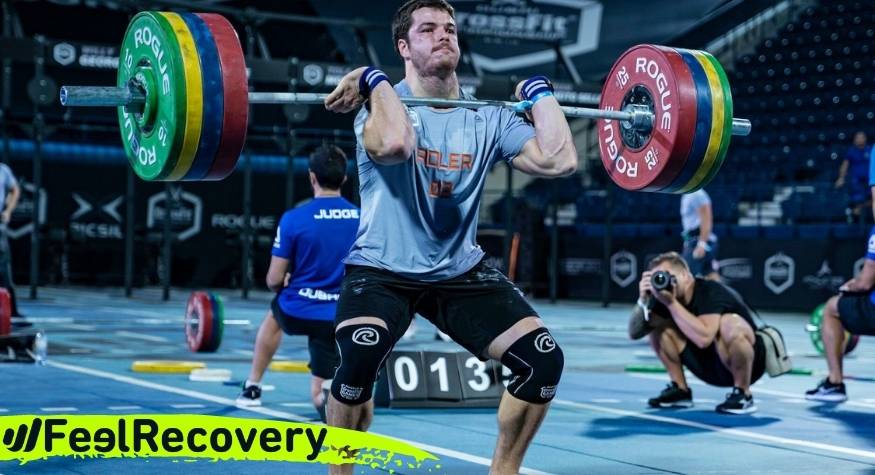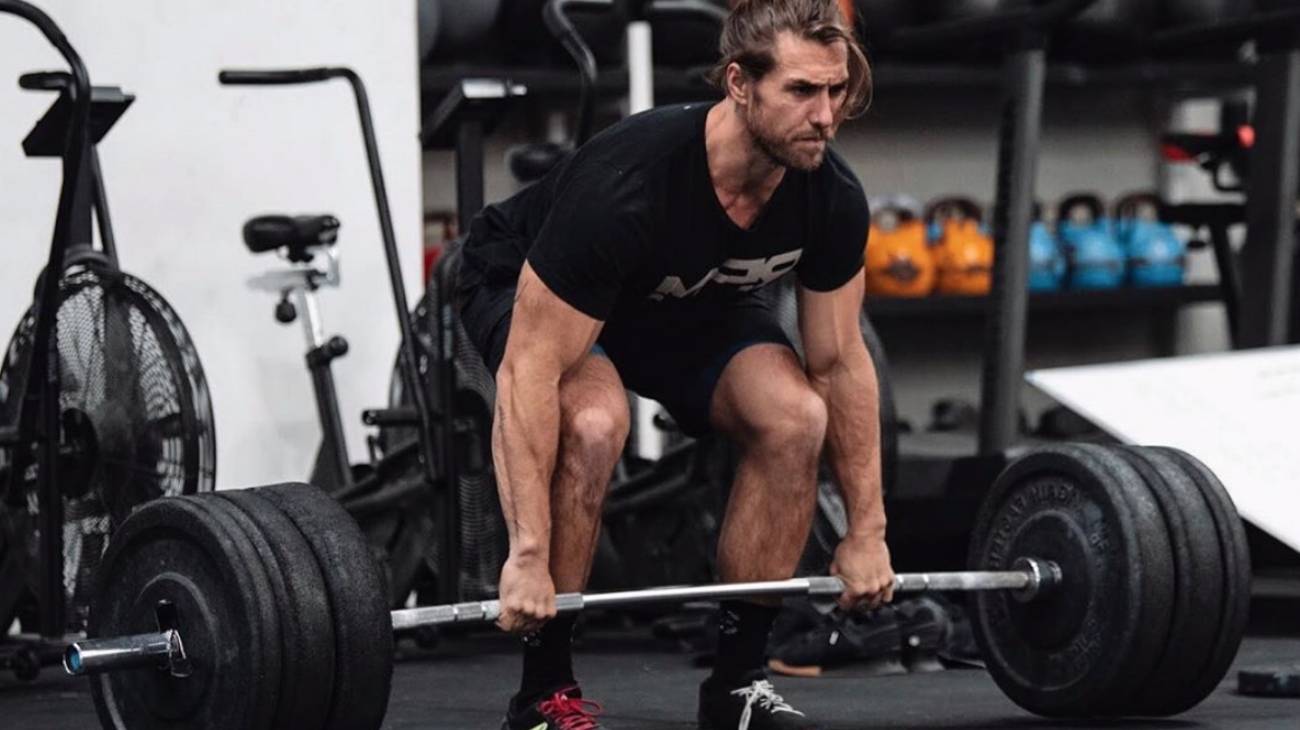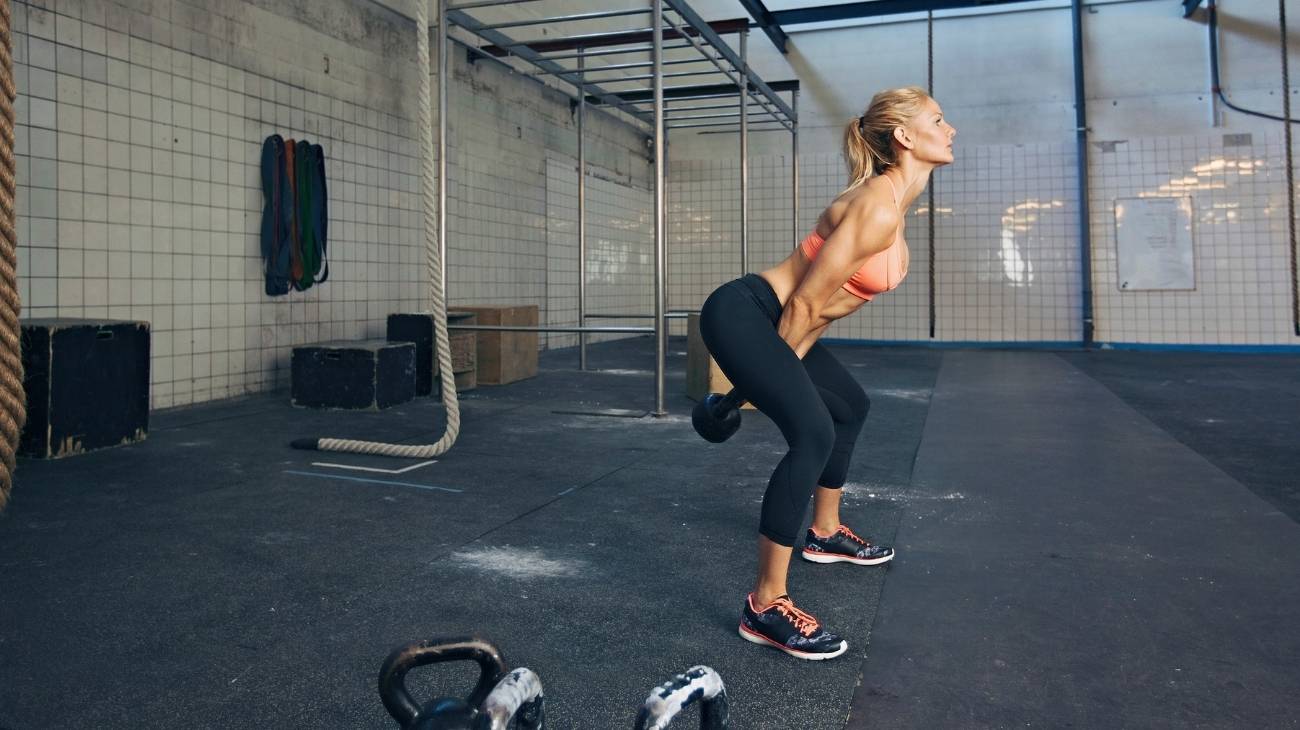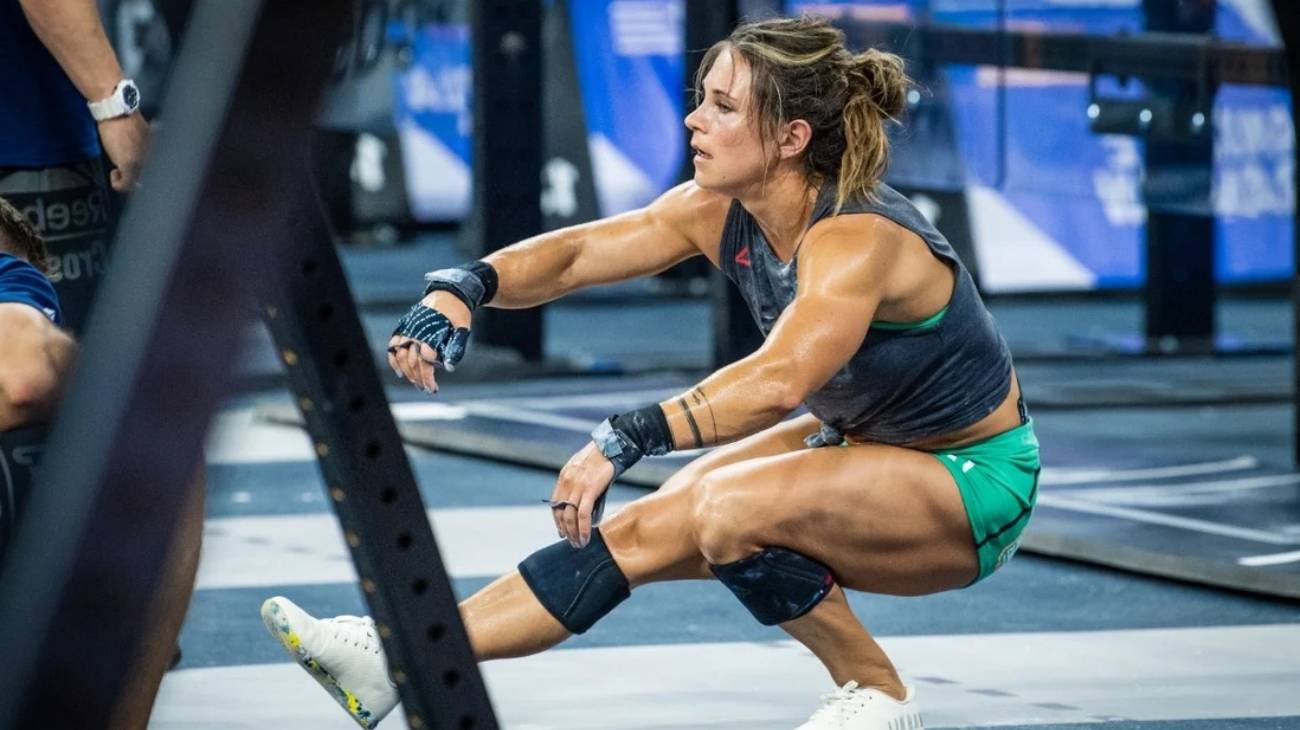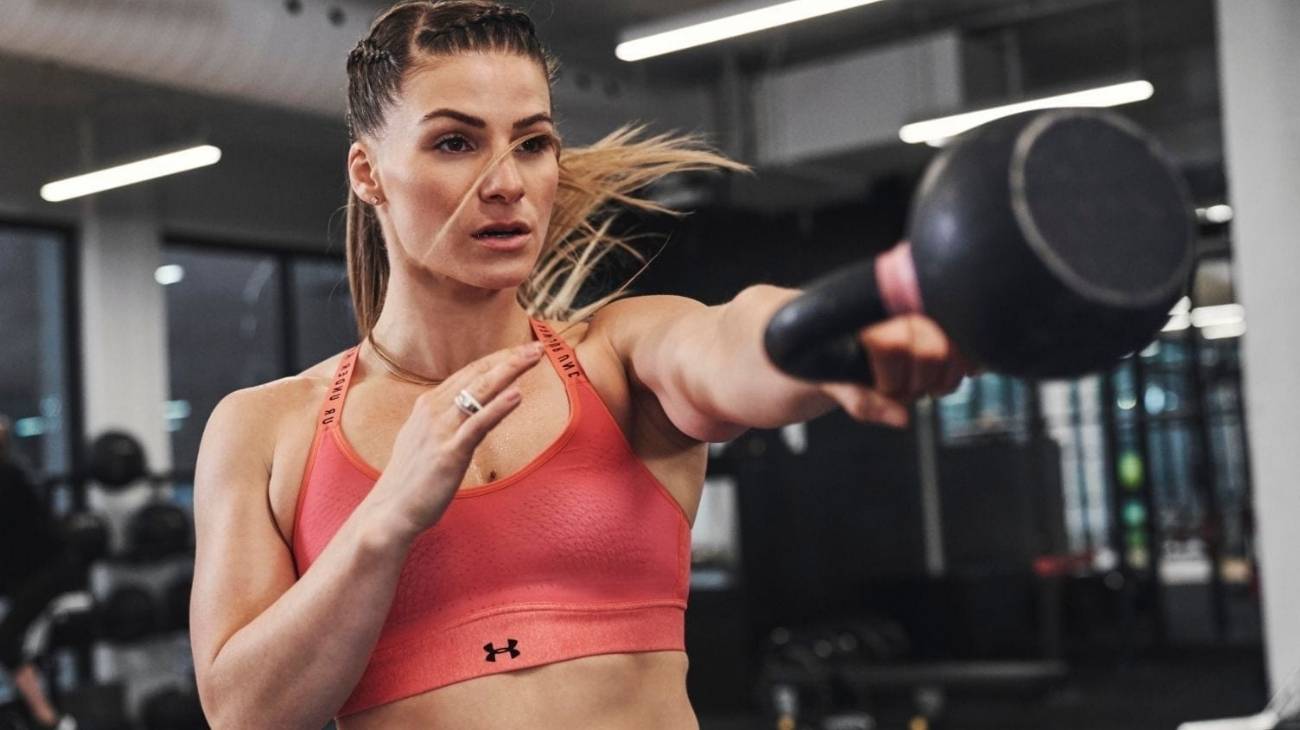We think that feeling pain in the joints is synonymous with doing a perfect routine, but this is not the case. Your body tells you that something is wrong and you should check your technique, weight and reps when you train in Crossfit.
As injuries are frequent in Crossfit, we show you a list of the most common ailments and discomforts that you should attack in time. You will also learn how to apply the PRICE therapy to soft tissue injuries.
What are the most common types of knee injuries when doing Crossfit?
In Crossfit we must pay attention to doing the exercises correctly, knowing how much weight to use and not doing unnecessary repetitions that leave you sore.
Check out this list of knee injuries that most affect the Crossfit player:
Anterior cruciate ligament injury
This can be related to a sprain or tear. This ligament is one of the main tissues in the knee that provides stability and balance. It occurs frequently when performing squats with weight on the back, but the injury is also associated with improper full flexion and poor landing of the body, the weight of which falls largely on the knee.
When this occurs, many people feel a sort of popping or clicking sound when this ligament is injured, even if there is no immediate pain, it is always a good idea to stop activity and walk around to assess the progress.
Meniscal injury
Any exercise circuit that involves twisting, jumping and twisting of the body can cause damage to the meniscus in the knee. A meniscus tear is likely when we carry a lot of weight on our backs.
Each knee has two menisci that act like cushions between the bones. When one meniscus tears there is pain, swelling and stiffness. The initial treatment is always going to be rest and ice, as part of the PRICE therapy you will learn in this article. Surgery should always be the last option.
Knee tendonitis
The most common is "jumper's knee" and is caused by overusing the knee for jumping, which causes the patellar tendon to accumulate wear and tear and become inflamed. This tendon is the first tissue to take the impact of jumping, as it works with the front muscles of the thigh and its function is to maintain balance. If you don't warm up properly, your legs may not be ready for the intensity of Crossfit.
Joint inflammation
In the joints there are linings that can swell and cause severe pain if you are not careful when doing the routines. This is the accumulation of synovial fluid in the soft tissues of the bursa. The knee often looks bigger and deformed, the main sign to look out for. If you continue to exercise, the force exerted may create cracks in the bones and then we are talking about fractures.
Cartilage injury
Again, excess weight during crossfit sessions causes too much pressure or friction on the cartilage behind the kneecap. This is patellofemoral pain syndrome. In exercises such as running, jumping and squatting the knee takes all the strain to achieve these movements, but it does not always react in the best way and with repetitions the injury occurs.
The kneecap serves as a shield, so a strong frontal blow is also reason enough to feel this ailment that forces to stop the sport activity.
Knee subluxation
Usually occurs when a high-intensity force pushes and flexes the knee beyond its limits. In a typical situation, the knee is usually poorly coupled to falls and movements, but when adding force and weight to a circuit, subluxation occurs.
With an X-ray, the diagnosis is more accurate as the doctor will see if an artery is affected, and if positive, surgery is the quickest and safest approach.
Best products for the recovery of knee injuries in Crossfit
Bestseller
-
2 Knee Compression Sleeve (Black/Gray)
£17,50 -
2 Knee Compression Sleeve (Green/Navy)
£17,50 -
2 Knee Compression Sleeve (Pink/Bordeaux)
£17,50 -
2 Patella Knee Strap (Black/Gray)
£12,95 -
2 Patella Knee Strap (Green/Navy)
£12,95 -
2 Patella Knee Strap (Pink/Bordeaux)
£12,95 -
Microwave Wheat Bag for Back Pain Relief (Extra Large) (Hearts)
£25,50 -
Microwave Wheat Bag for Back Pain Relief (Extra Large) (Oxford)
£25,50 -
Microwave Wheat Bag for Back Pain Relief (Extra Large) (Sport)
£25,50 -
Microwaveable Wheat Bag for Pain Relief (Hearts)
£17,50 -
Microwaveable Wheat Bag for Pain Relief (Oxford)
£17,50 -
Microwaveable Wheat Bag for Pain Relief (Sport)
£17,50 -
Wheat Bag for Microwave Classic Bottle Shaped (Hearts)
£17,50 -
Wheat Bag for Microwave Classic Bottle Shaped (Oxford)
£17,50 -
Wheat Bag for Microwave Classic Bottle Shaped (Sport)
£17,50
How to apply the RICE therapy to treat knee injuries in Crossfit?
There are injuries that do not hurt, but become inflamed, and there are injuries that hurt and become extremely inflamed. In the event of discomfort or injury, first aid should be applied. At the end of the 70's, the RICE therapy was created and then there was an update to PRICE, do you know how to apply it? We show you how to do it right away:
- Protection: Any movement of the leg should be stopped while the injury is further assessed. Even if there is an initial assessment, the first aid approach should not stop.
- Rest: Rest is intended to reduce the likelihood of complication of the injury. In cases such as knee sprains, it is recommended to step slowly until the leg is extended. Only if the specialist indicates it, light exercises that allow mobility to the knee are performed.
- Ice: Ice is applied for 20 minutes, and with a 10-minute rest, this will help to reduce the inflammation of the damaged knee. Remember that the cold should not be on the injury all the time. There should always be a break.
- Compression: With an elastic bandage, a light compression is made to lower the blood flow in the area, if the bandage is too strong it will cut off the circulation completely. It is recommended to have compression knee braces for these cases.
- Elevation: Thanks to the effect of gravity, blood and toxins released during training circulate less frequently in the knee. This is intended to further reduce swelling, pain and oedema. What you should do is lie on your back and rest your leg or knee on a bench while the swelling subsides
References
- Gardiner, B., Devereux, G., & Beato, M. (2020). Injury risk and injury incidence rates in CrossFit. The Journal of sports medicine and physical fitness, 60(7), 1005-1013. https://europepmc.org/article/med/32343082
- Muthuri, S. G., McWilliams, D. F., Doherty, M., & Zhang, W. (2011). History of knee injuries and knee osteoarthritis: a meta-analysis of observational studies. Osteoarthritis and cartilage, 19(11), 1286-1293. https://www.sciencedirect.com/science/article/pii/S1063458411002299
- Majewski, M., Susanne, H., & Klaus, S. (2006). Epidemiology of athletic knee injuries: A 10-year study. The knee, 13(3), 184-188. https://www.sciencedirect.com/science/article/abs/pii/S0968016006000032
- Calhoon, G., & Fry, A. C. (1999). Injury rates and profiles of elite competitive weightlifters. Journal of athletic training, 34(3), 232. https://www.ncbi.nlm.nih.gov/pmc/articles/PMC1322916/
- Miranda, H., Viikari-Juntura, E., Martikainen, R., & Riihimäki, H. (2002). A prospective study on knee pain and its risk factors. Osteoarthritis and cartilage, 10(8), 623-630. https://www.sciencedirect.com/science/article/pii/S106345840290796X
- Meyer, J., Morrison, J., & Zuniga, J. (2017). The benefits and risks of CrossFit: a systematic review. Workplace health & safety, 65(12), 612-618. https://journals.sagepub.com/doi/pdf/10.1177/2165079916685568
- da Costa, T. S., Louzada, C. T. N., Miyashita, G. K., da Silva, P. H. J., Sungaila, H. Y. F., Lara, P. H. S., … & Arliani, G. G. (2019). CrossFit®: Injury prevalence and main risk factors. Clinics, 74. https://www.scielo.br/j/clin/a/4FtbB77jTQtQgPmt4KrBjJy/
- Montalvo, A. M., Shaefer, H., Rodriguez, B., Li, T., Epnere, K., & Myer, G. D. (2017). Retrospective injury epidemiology and risk factors for injury in CrossFit. Journal of sports science & medicine, 16(1), 53. https://www.ncbi.nlm.nih.gov/pmc/articles/PMC5358031/
- Tafuri, S., Salatino, G., Napoletano, P. L., Monno, A., & Notarnicola, A. (2018). The risk of injuries among CrossFit athletes: an Italian observational retrospective survey. The Journal of sports medicine and physical fitness, 59(9), 1544-1550. https://europepmc.org/article/med/30421876
- Weisenthal, B. M., Beck, C. A., Maloney, M. D., DeHaven, K. E., & Giordano, B. D. (2014). Injury rate and patterns among CrossFit athletes. Orthopaedic journal of sports medicine, 2(4), 2325967114531177. https://journals.sagepub.com/doi/pdf/10.1177/2325967114531177

